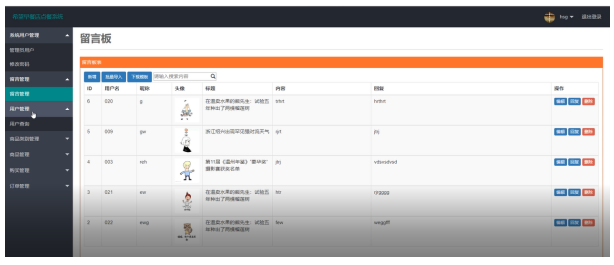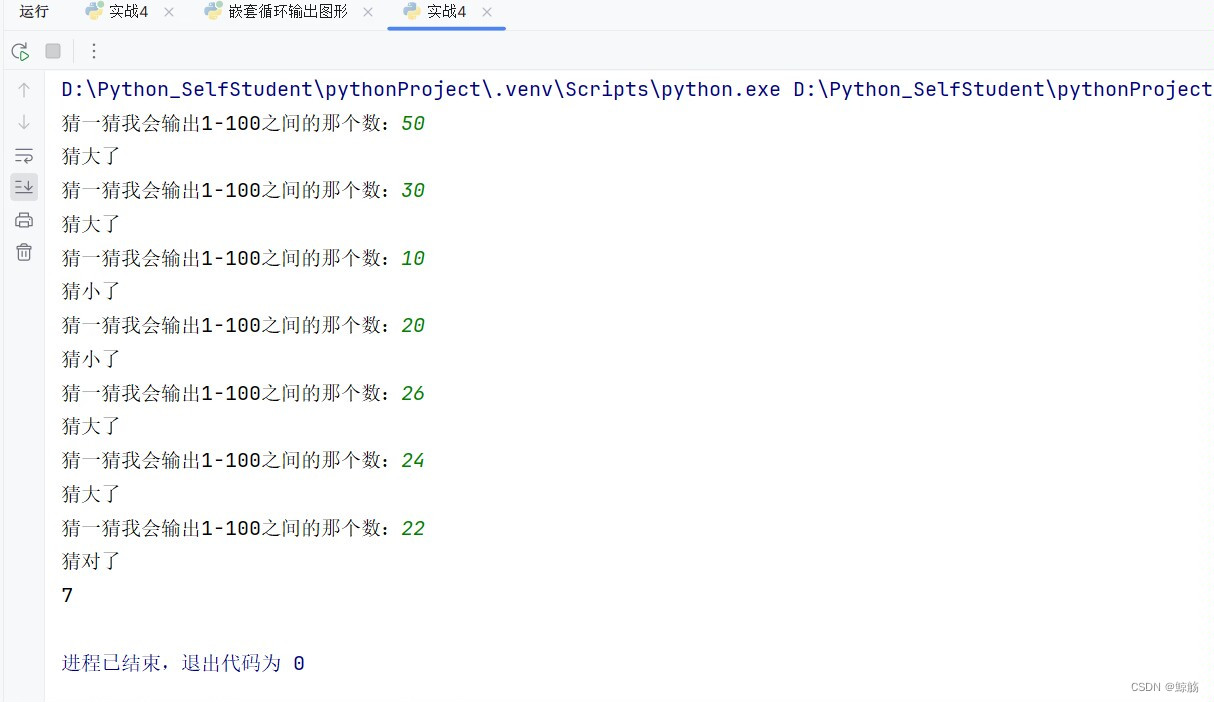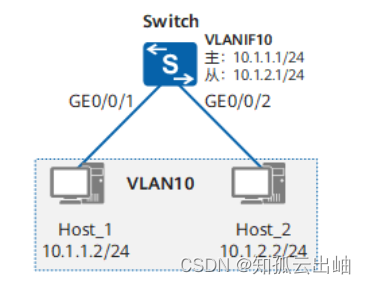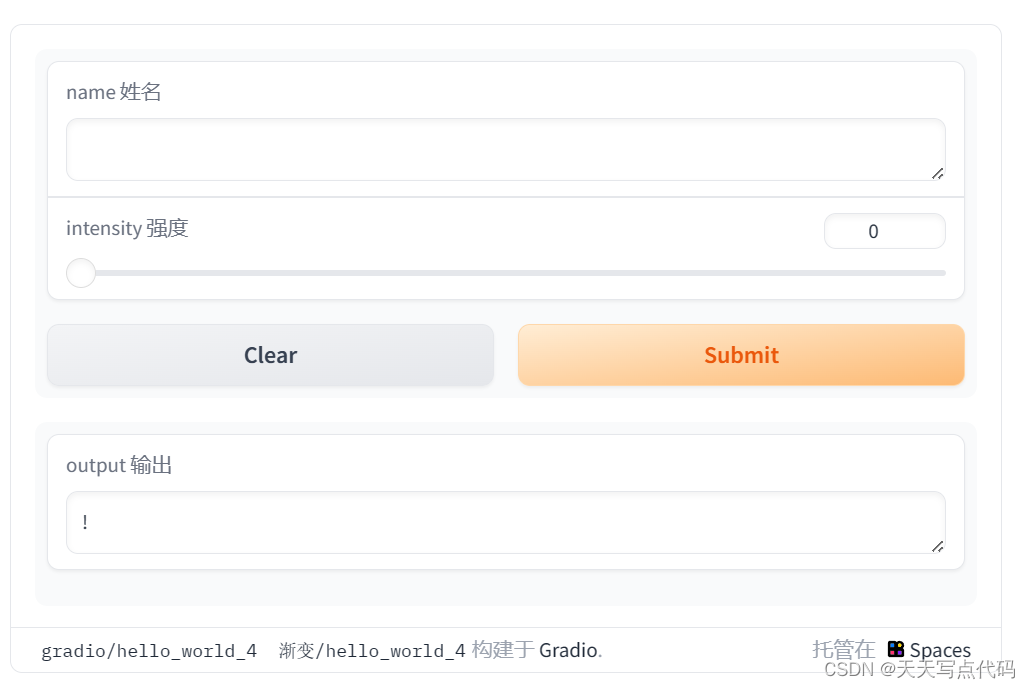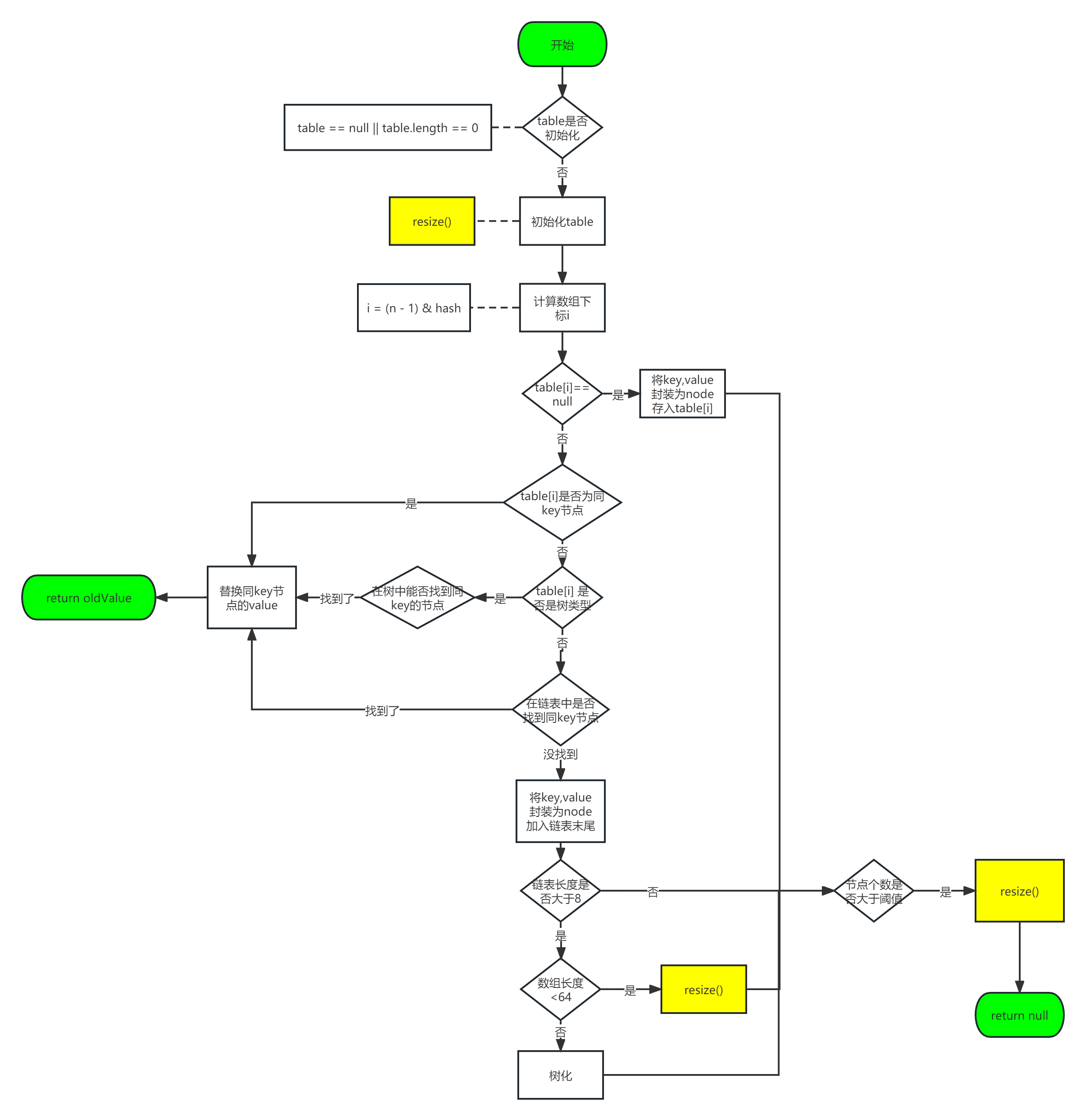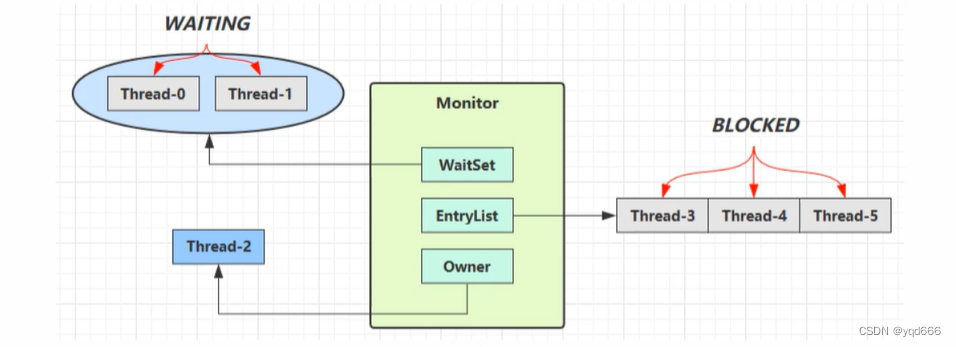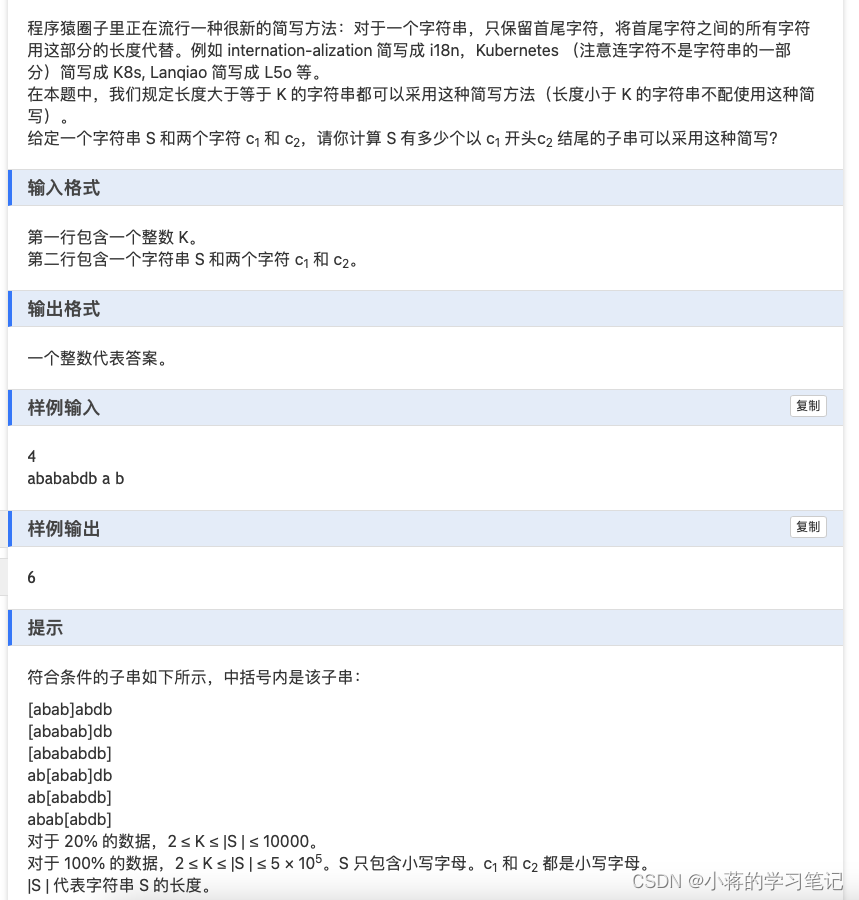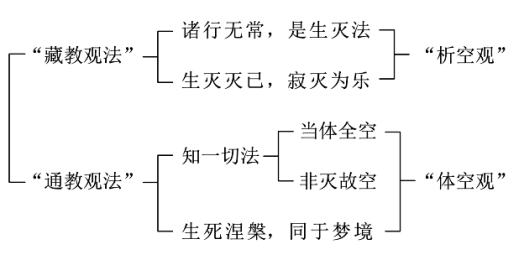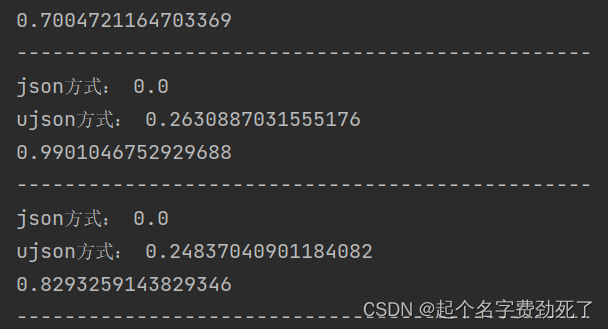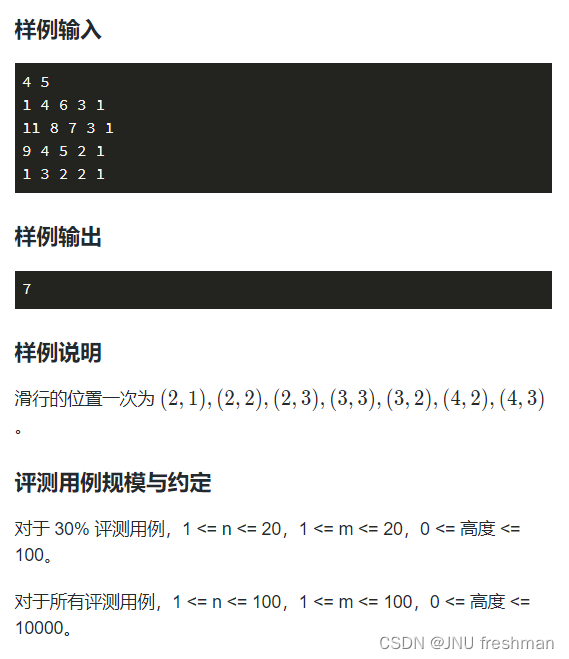🐵本篇文章将对二叉树的一些基础操作进行梳理和讲解

一、操作简述
int size(Node root); // 获取树中节点的个数
int getLeafNodeCount(Node root); // 获取叶子节点的个数
int getKLevelNodeCount(Node root,int k); // 获取第K层节点的个数
int getHeight(Node root); // 获取二叉树的高度
TreeNode find(Node root, int val); // 检测值为value的元素是否存在
void levelOrder(Node root); //层序遍历
boolean isCompleteTree(Node root) // 判断一棵树是不是完全二叉树
接下来会对下面这棵树进行上述操作:
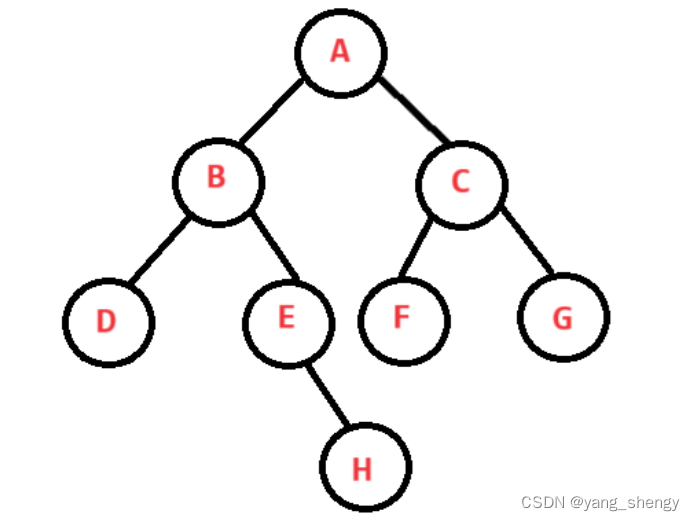
public class BinaryTree {
static class TreeNode {
public char val;
public TreeNode left;
public TreeNode right;
public TreeNode(char val) {
this.val = val;
}
}
}二、代码实现
1.获取树中结点的个数
思路:定义一个nodeSize, 按照二叉树前序遍历的方式遍历这颗二叉树, 每遍历一个结点, nodeSize就+1
public int nodeSize;
//nodeSize不能写到方法内部,否则每次递归nodeSize都会被初始化为0,最终导致结果错误
public int size(TreeNode root) {
if (root == null) {
return 0;
}
nodeSize++;
size(root.left);
size(root.right);
return nodeSize;
}
2. 获取树中叶子结点的个数
思路:叶子结点也就是没有左右孩子的结点,该方法的实现和上一个方法思路大体一致,定义一个leafNode,在遍历这颗二叉树的过程中,如果该节点没有左右孩子则leafNode + 1
public static int leafNode;
public int getLeafNodeCount(TreeNode root) { //计算叶子结点个数
if (root == null) {
return 0;
}
if (root.left == null && root.right == null) {
leafNode++;
}
getLeafNodeCount(root.left);
getLeafNodeCount(root.right);
return leafNode;
}
3. 计算k层结点的个数

思路:假如要计算第3层结点的个数,k = 3,整个树的第3层也就是这个树的左子树(B)的第2层+右子树(C)的第2层,也就是B的左子树的第一层 + B的右子树的第一层 和C的左子树的第一层 + C的右子树的第一层,通过前序遍历的方式,每遍历到一层k就减1,当k == 1时就返回1
public int getKLevelNodeCount(TreeNode root,int k) {//计算第k层结点的个数
if (root == null) {
return 0;
}
if (k == 1) {
return 1;
}
k--;
return getKLevelNodeCount(root.left, k) +
getKLevelNodeCount(root.right, k);
}

4. 获取树的高度
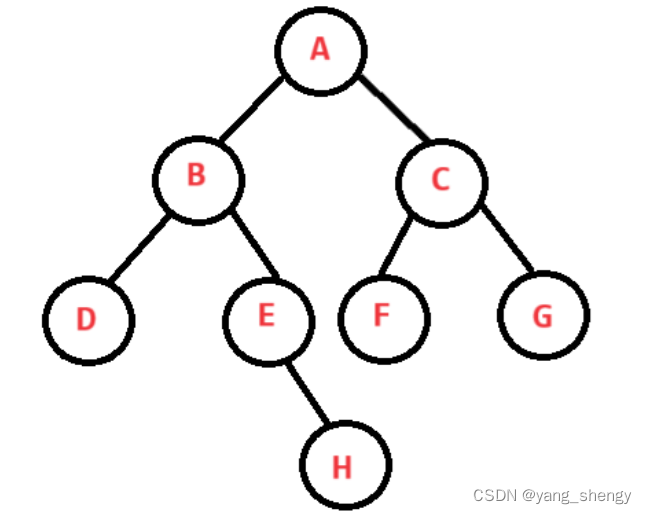
思路:整个树的高度也就是左子树的高度和右子树的高度的最大值+1,再通过递归的方式求左子树和右子树的高度
public int getHeight(TreeNode root) {
if (root == null) {
return 0;
}
int leftHeight = getHeight(root.left);
int rightHeight = getHeight(root.right);
return Math.max(leftHeight, rightHeight) + 1;
}
5. 检测值为val的元素的结点是否存在
思路:遍历这棵二叉树,找到值为val的结点后逐层返回,直接看代码:
public TreeNode find(TreeNode root, char val) {
if (root == null) {
return null;
}
if (root.val == val) {
return root;
}
TreeNode leftNode = find(root.left, val);//必须用一个变量来接收,否则上述返回的root没有意义,最终返回的还是null
if (leftNode != null) { //leftNode不为空说明找到了,将其返回
return leftNode;
}
TreeNode rightNode = find(root.right, val);
if (rightNode != null) {
return rightNode;
}
return null; //没有找到val结点就返回null
}
6. 层序遍历二叉树
思路:定义一个队列,先将这个树的根结点入队,之后通过循环如果队列不为空,则让队头结点出队,判断该结点的左和右是否为空,不为空的入队,如此循环知道队列为空,整个二叉树遍历完毕
public void levelOrder(TreeNode root) {
if (root == null) {
return;
}
Queue<TreeNode> queue = new LinkedList<>();
queue.offer(root);
while(!queue.isEmpty()) {
TreeNode cur = queue.poll();
System.out.print(cur.val +" ");
if(cur.left != null) {
queue.offer(cur.left);
}
if (cur.right != null) {
queue.offer(cur.right);
}
}
}
7. 判断一棵树是不是完全二叉树
以这棵树为例:

一开始和层序遍历的思路一样,定义一个队列,将树的根结点存入队列中,接下来设置一个循环,当队列不为空的情况下将队头元素出队,如果出队结点不为空则直接将其左右孩子入队(不用判断其左右孩子是否为空)如果出队结点为空则结束该循环
完成上述操作后再设置一个循环,循环条件仍然是队列不为空,每次循环都将队头元素出队然后进行判断,如果该结点不为空,则该树不是完全二叉树
根据上述操作对上面这棵树进行实操
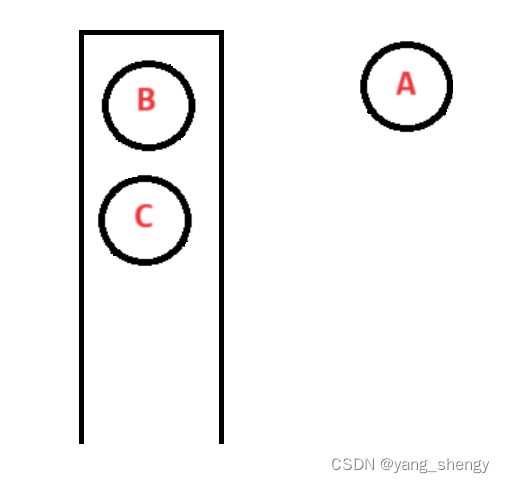
将根结点入队,之后进入循环,将队头元素出队,A结点不为空所以将其左右孩子入队,之后再将队头元素出队,B结点不为空所以再将其左右孩子入队
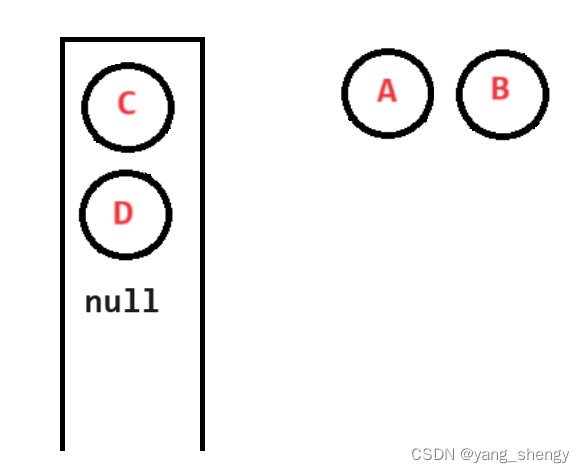
再将C出队,C结点不为空,再将其左右孩子入队,再将D结点出队,D结点不为空,再将其左右孩子入队,之后再将队头元素出队,此时出队的元素为空,此循环结束
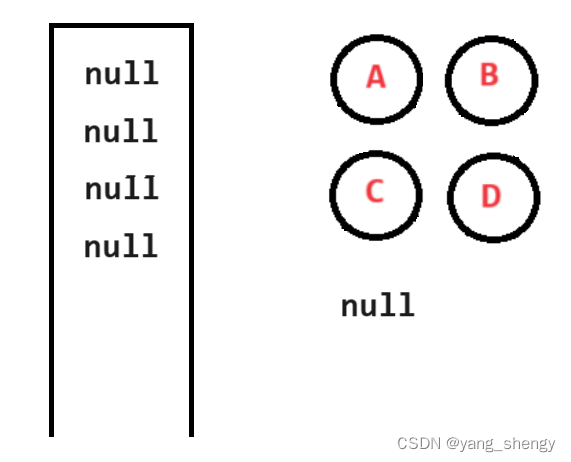
进入第二个循环,只要队列不为空,就出队队头元素然后对其进行判断,只要出队元素不为空,则其不是完全二叉树,上述队列全部为null,所以该树是完全二叉树
如果是下面这棵树,在第一次循环后,会是如下情况:
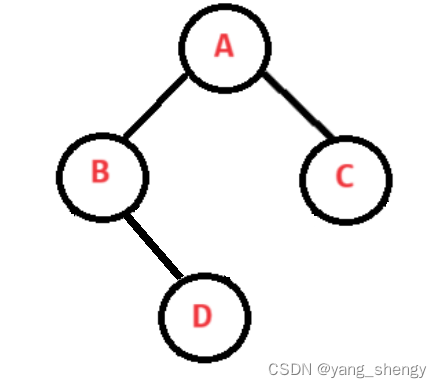
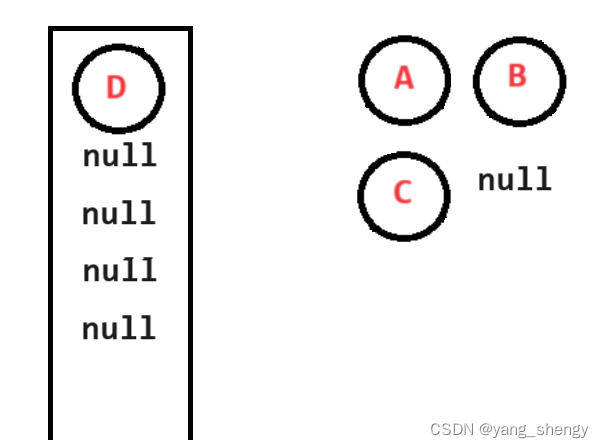
在第二个循环由于D结点不为null,所以该树不是完全二叉树
代码如下:
public boolean isCompleteTree(TreeNode root) {
if (root == null) {
return false;
}
Queue<TreeNode> queue = new LinkedList<>();
queue.offer(root);
while(!queue.isEmpty()) {
TreeNode cur = queue.poll();
if (cur == null) {
break;
}
queue.offer(cur.left);
queue.offer(cur.right);
}
while(!queue.isEmpty()) {
TreeNode cur = queue.poll();
if (cur != null) {
return false;
}
}
return true;
}
🙉本篇文章到此结束
